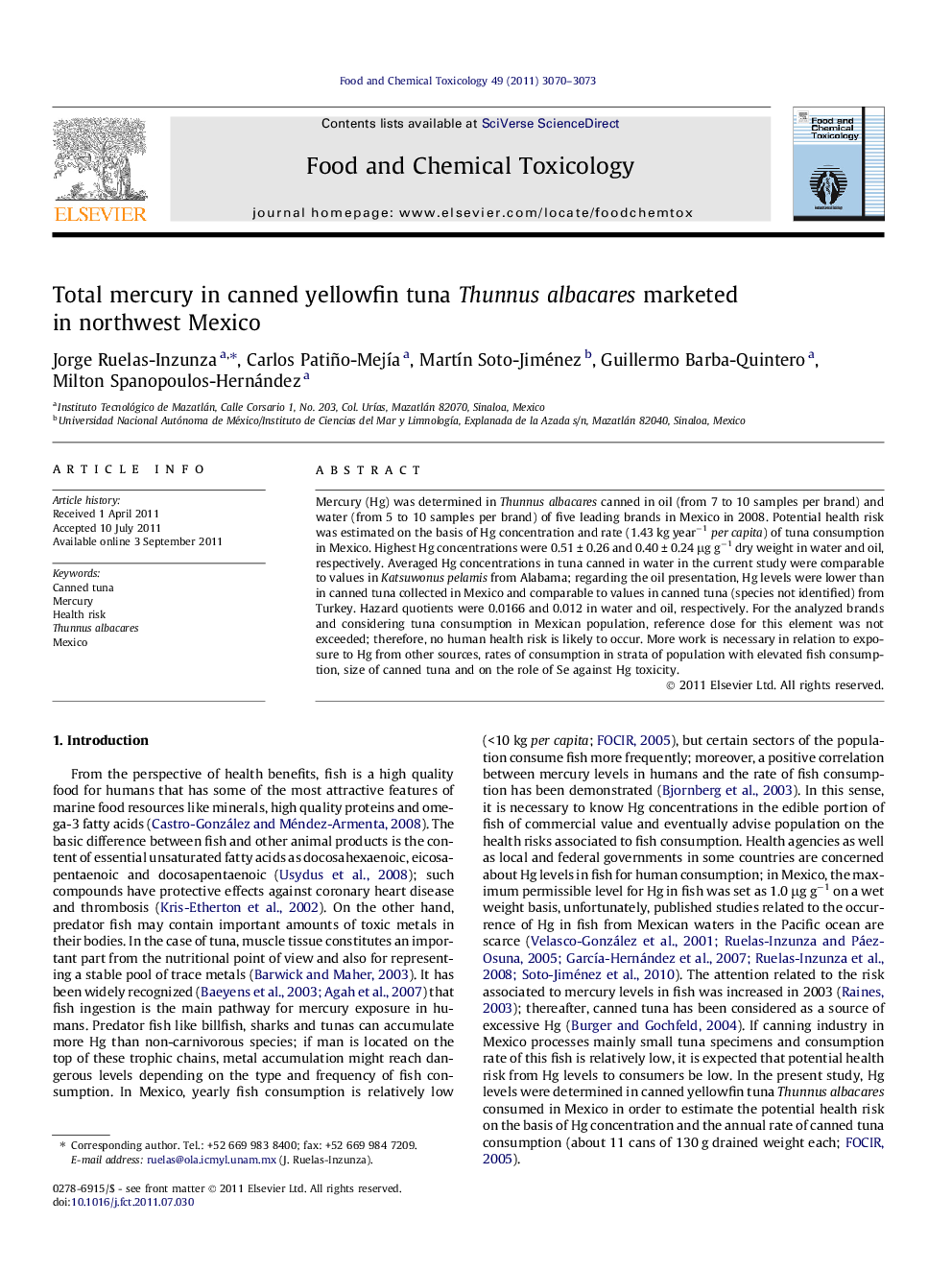| Article ID | Journal | Published Year | Pages | File Type |
|---|---|---|---|---|
| 5853207 | Food and Chemical Toxicology | 2011 | 4 Pages |
Mercury (Hg) was determined in Thunnus albacares canned in oil (from 7 to 10 samples per brand) and water (from 5 to 10 samples per brand) of five leading brands in Mexico in 2008. Potential health risk was estimated on the basis of Hg concentration and rate (1.43 kg yearâ1per capita) of tuna consumption in Mexico. Highest Hg concentrations were 0.51 ± 0.26 and 0.40 ± 0.24 μg gâ1 dry weight in water and oil, respectively. Averaged Hg concentrations in tuna canned in water in the current study were comparable to values in Katsuwonus pelamis from Alabama; regarding the oil presentation, Hg levels were lower than in canned tuna collected in Mexico and comparable to values in canned tuna (species not identified) from Turkey. Hazard quotients were 0.0166 and 0.012 in water and oil, respectively. For the analyzed brands and considering tuna consumption in Mexican population, reference dose for this element was not exceeded; therefore, no human health risk is likely to occur. More work is necessary in relation to exposure to Hg from other sources, rates of consumption in strata of population with elevated fish consumption, size of canned tuna and on the role of Se against Hg toxicity.
⺠Mercury levels in tuna canned in water and in oil were not significantly different. ⺠From hazard quotients, it can be said that health effects on tuna consumers are not likely to occur. ⺠In Hg toxicology, it is necessary to take into account the antagonistic role of selenium.
